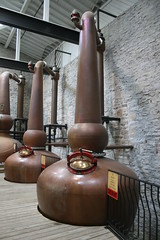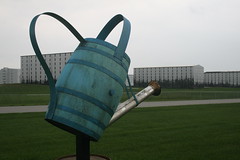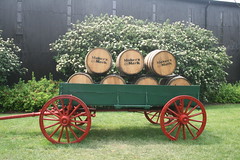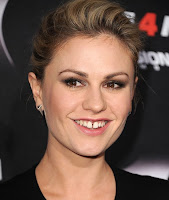Books Bought
Just A Geek by Wil Wheaton
Dancing Barefoot by Wil Wheaton
The History of the World in 6 Glasses by Tom Standage
A Star Called Henry by Roddy Doyle
Packing For Mars by Mary Roach
Younger Next Year by Chris Crowley and Dr. Harry Lodge
Blackout by Connie Willis
Reamde by Neal Stephenson
All Clear by Connie Willis
God, No!: Signs You May Already Be an Atheist and Other Magical Tales by Penn Jillette
Air Conditioning In Summer And Winter by Richard E. Holmes
Books Read
Just A Geek by Wil Wheaton
Dancing Barefoot by Wil Wheaton
How The Irish Saved Civilization by Thomas Cahill
Bogmail by Patrick McGinley
The History of the World in 6 Glasses by Tom Standage
A Star Called Henry by Roddy Doyle
Packing For Mars by Mary Roach
Younger Next Year by Chris Crowley and Dr. Harry Lodge
The Cut by George Pelecanos
God, No!: Signs You May Already Be an Atheist and Other Magical Tales by Penn Jillette
Comments

 I have become a bit of a Wil Wheaton fanboy which is odd since when Star Trek: The Next Generation was on I hated his Wesley Crusher character. But I was far from the only one back then. I was aware of his blog and that he had become a minor internet celebrity but I never though much of it. Then he started doing guest shots on The Big Bang Theory. And then I discovered The Guild and his Evil Leader character.
I have become a bit of a Wil Wheaton fanboy which is odd since when Star Trek: The Next Generation was on I hated his Wesley Crusher character. But I was far from the only one back then. I was aware of his blog and that he had become a minor internet celebrity but I never though much of it. Then he started doing guest shots on The Big Bang Theory. And then I discovered The Guild and his Evil Leader character.Wheaton is a very persistent cross promoter and I started reading some excerpts of his and ended up ordering his memoir Just A Geek on the Kindle. It details his post ST:TNG career and the struggles of trying become a Somebody Again instead of a Has Been. Repurposed from his blog, the tone is uneven and it's frequently repetitive, but it's a fascinating insight into the Hollywood system particularly if you read just between the lines a little.
The centerpiece of the book is his visit to a Star Trek convention in Las Vegas. This tale gets a fuller telling in an earlier shorter self-published memoir Dancing Barefoot which sells on Amazon for about nine bucks. It was here I started feeling just a little rolled. I'm not sure why the digital version of a book a quarter the length costs nearly as much. But I guess when you are Wil Wheaton you deserve the money.
 I spent two weeks in Ireland on vacation. During that time I was also reading How The Irish Saved Civilization. This book focuses on the days of early Christianity where a newly literate population embraced the knowledge of both the Church as well as ancient Greeks and Romans. Their illuminated manuscripts are some of the greatest cultural contributions of the Celtic relationship.
I spent two weeks in Ireland on vacation. During that time I was also reading How The Irish Saved Civilization. This book focuses on the days of early Christianity where a newly literate population embraced the knowledge of both the Church as well as ancient Greeks and Romans. Their illuminated manuscripts are some of the greatest cultural contributions of the Celtic relationship.Part of the unique aspect of this place and time was the relative isolation Ireland. The island had never fallen to the Roman Empire and was not under the direct influence of the popes for a hundred years or more. It had time to develop its own traditions. The book also details the ultimate overshadowing of Ireland by Europe as it consolidated authority.
And important aspect of the book from my point as a tourist was that it added a lot of perspective to my travels. As I visited places like Cahill and Glendalough where there are remnants of these original communities. But the greatest thrill was going to Trinity College and seeing the Book of Kells, the manuscripts created around 800 CE in Iona, Scotland and later in Kells, Ireland. The contributions of these early Irish Christians is an important part of not just church history but of western civilization.
 A book I had read about 20 years ago was Bogmail by Patrick McGinley. Rereading it while in Ireland gave me a new perspective and added depth to the experiences. Set in Donegal, an area of Ireland I didn't visit, it tells the story of a pub owner who kills his bartender for seducing his daughter. Obviously it's a comedy.
A book I had read about 20 years ago was Bogmail by Patrick McGinley. Rereading it while in Ireland gave me a new perspective and added depth to the experiences. Set in Donegal, an area of Ireland I didn't visit, it tells the story of a pub owner who kills his bartender for seducing his daughter. Obviously it's a comedy.I recognized a lot of he characters and the locations or at least the archetypes. A lot of the slang and odd geographic features unique to Ireland were also a lot more understandable. The story itself includes a lot colorful folksy characters. The town is united when a newcomer decides to take on the silk collar priest for ulterior motives. Meanwhile the booksmart but clueless local police chief begins investigating the murder.
The story unfolds in ways you don't expect as the history of Tim Roarty is unpeeled like an onion.
 Not to give away any spoilers but the titular drinks in A History of the World in Six Glasses are beer, wine, spirits, tea, coffee, and cola. Each chapter traces the origin of the beverage as well its impact on global trade. Beer and wine are buried in the distant mists of history and arguably the start of civilization. The section on spirits covers some of the time and territory covered in How The Irish Saved Civilization where knowledge is kept in the hands of a few. Tea and coffee were non-alcoholic beverages which fueled commerce and expanded exploration during the Enlightenment and the Age of Discovery.
Not to give away any spoilers but the titular drinks in A History of the World in Six Glasses are beer, wine, spirits, tea, coffee, and cola. Each chapter traces the origin of the beverage as well its impact on global trade. Beer and wine are buried in the distant mists of history and arguably the start of civilization. The section on spirits covers some of the time and territory covered in How The Irish Saved Civilization where knowledge is kept in the hands of a few. Tea and coffee were non-alcoholic beverages which fueled commerce and expanded exploration during the Enlightenment and the Age of Discovery.The final chapter is interesting in that it is not so much about a genre of beverage but the company of Coca Cola in particular. While cola as a beverage niche is important, the worldwide expansion of Coke tells the history of the 20th century with the drink as a proxy for the United States.
I have seen books on all these beverages being sold as stand-alone tales and they each probably merit them, but this book as a high level overview is fascinating because is shows different perspectives. And has a history of civilization and not just drinks, it gives plenty to lap up.
 While in a book store in California I ran across a shelf of books by Roddy Doyle, an award-winning Irish writer. I finally settled on one titled A Star Called Henry with the titular hero being an Irish revolutionary . It's an oddly told first person story with Henry being a young street urchin who spends his live on the periphery of the more famous historical characters.
While in a book store in California I ran across a shelf of books by Roddy Doyle, an award-winning Irish writer. I finally settled on one titled A Star Called Henry with the titular hero being an Irish revolutionary . It's an oddly told first person story with Henry being a young street urchin who spends his live on the periphery of the more famous historical characters.Henry's father was a thug bouncer who became an assassin. Henry follows in his father's footsteps but in the service of the IRA. He takes part in the Easter Monday uprising and then gets sent into the country to form guerrilla groups. The plot points as narrated by Henry are so over-the-top as to barely survive suspension of belief. Along the way there is a love story with a woman rebel even more zealous than Henry, unfinished business with his father, and insights into the Ireland of a hundred years ago.
The prose is lyrically beautiful and borderline poetic. The phrasing and cadences capture the soul of the country. It's a rather idiosyncratic book but it makes for a wonderful look at an era I had hitherto known nothing about.
 Mary Roach is one of those non-fiction writers who seems to delight in tackling off-beat topics and treating them in a light-hearted but thorough way. Her book Bonk (reviewed here) was an amazing look inside the world of sex research. In Packing For Mars, she puts the space program under the same scrutiny. I've read several books about space exploration, most famously The Right Stuff, but rather than tackle the personalities, she takes on the logistics.
Mary Roach is one of those non-fiction writers who seems to delight in tackling off-beat topics and treating them in a light-hearted but thorough way. Her book Bonk (reviewed here) was an amazing look inside the world of sex research. In Packing For Mars, she puts the space program under the same scrutiny. I've read several books about space exploration, most famously The Right Stuff, but rather than tackle the personalities, she takes on the logistics.In particular, she focuses on how the various bodily functions. She asks the questions most people would be too embarrassed to ask or perhaps even too naive to even think off. She covers eating, sleeping, drinking, pissing, shitting, and fucking, the last being largely hypothetical. It's all done with a minimum of smirking but also a great deal of wit.
This book needs to be read by anybody whose childhood ambitions ever included astronaut. It will dissuade you. I'm not sure I'd ever get past the Vomit Comet zero-gee training. Space travel comes off as extremely messy and inconvenient. It's a wonder that anybody puts up with it.
The level of detail is fascinating. There is so much going on in so many ways that the general public is completely unaware of. The non-linear narrative does muddy the timeline a little and too much effort is spent sending the reader forward and backward in the book. But this a great breezy but informative read.
 Younger Next Year: Live Strong, Fit, and Sexy - Until You're 80 and Beyond by Chris Crowley and Henry S. Lodge was recommended in a blog post by Neil Gaiman. He credits the book with helping him lose a lot of weight and become fitter. After reading the book, I suspect that the incentive of chasing after his new bride, former Dresden Doll Amanda Fucking Palmer, had more to to with his motivation to become trimmer than any particular piece of advice in this book.
Younger Next Year: Live Strong, Fit, and Sexy - Until You're 80 and Beyond by Chris Crowley and Henry S. Lodge was recommended in a blog post by Neil Gaiman. He credits the book with helping him lose a lot of weight and become fitter. After reading the book, I suspect that the incentive of chasing after his new bride, former Dresden Doll Amanda Fucking Palmer, had more to to with his motivation to become trimmer than any particular piece of advice in this book.The book is squarely aimed at older upper-middle class men, not suprising since it was written by a retired lawyer/motivational speaker and a gerontologist. They more or less alternate chapters with lots of pep-talking point with chapters filled with pop physiology. The advice is generally very broad and vague. Their one Big Idea which is stretched across the entire book is that men over 50 must work-out six times a week, four 45-minute heavy aerobic workouts and twice with weight strength training. Not bad advice, but hardly earth-shattering.
The rest is even more common-sensical. In addition to the Exercise More trope, they touch on Eat Less, although in much less detail. And in perhaps a blow to the trophy wife industry, the recommend guarding and strengthening your existing relationships. They note that loving support is as important as anything else.
Perhaps it's because of the narrow focus of the target audience but the book reeks of upper middle class privilege. In order to kick-start the fitness program, they recommend taking anywhere from one week to a month off to go on a sport related vacation. Sports they seem to be particularly fond of include downhill skiing and spin classes. The one piece of advice I have taken to heart is to buy good gear. That I can use as a rationalization for lots of things.
There is nothing wrong or bad with the advice, I just wish parts of it hadn't been so glib.
 I have Baco Number of two from George Pelecanos and recently read The Night Gardener so it was with some enthusiasm that I waited patiently for his new novel The Cut. This was to be the first in a series of novels featuring a recurring character who works outside normal legal channels.
I have Baco Number of two from George Pelecanos and recently read The Night Gardener so it was with some enthusiasm that I waited patiently for his new novel The Cut. This was to be the first in a series of novels featuring a recurring character who works outside normal legal channels.In particular, the advance publicity material and the early reviews mentioned strong resemblances to John D. McDonald character Travis McGee. And the parallels are strong. Both Spero Lucas and Travis are former soldiers who now recover possessions for people in exchange for a the titular cut of the recovered value. Forty years of hard-boiled writing have even lowered the going rate from 50% to 40%.
But beyond the initial concept, the resemblance is much less striking. Travis was more of a tarnished knight in tin-foil armor while Spero is a more morally ambiguous fellow. His first case in on behalf of a jailed drug dealer who is concerned with missing deliveries, not a case the resident of the Busted Flush would have touched with a ten foot lance. Pelecanos's take is much grittier as he delves into the familiar (to him at least) underworld of petty crime bosses and crooked cops.
The writing is very breezy and fast paced, approaching Stephanie Plum reading levels. And the plot seems a little light and padded. But it pays off in some nifty action sequences and a clear if nuanced moral tone. I don't blame Pelecanos for going for the reliable income stream a series character affords, but these are tough tricks to pull off when characters are multi-dimensional. There are only so many epiphanies one can pull off before appearing to be a little slow on the learning curve.
Still, I look forward to future installments in this exciting new series.
 In my BooksFirst posts, I include audiobooks, particularly if they are unabridged. Two of the best ones I have heard lately were Bossypants written and read by Tina Fey and the similar book by Colin Ferguson (both reviewed here). I really wish that was the format I had chosen for God, No! by Penn Jillette. The talking half of magician duo Penn and Teller, Jillette is a force of nature and a famous atheist. I have been reading his work since he had a column in the back of PC/Computing in the 1980s. I also thoroughly enjoy his rants on the Showtime series Bullshit! even if I don' always agree with his point of view.
In my BooksFirst posts, I include audiobooks, particularly if they are unabridged. Two of the best ones I have heard lately were Bossypants written and read by Tina Fey and the similar book by Colin Ferguson (both reviewed here). I really wish that was the format I had chosen for God, No! by Penn Jillette. The talking half of magician duo Penn and Teller, Jillette is a force of nature and a famous atheist. I have been reading his work since he had a column in the back of PC/Computing in the 1980s. I also thoroughly enjoy his rants on the Showtime series Bullshit! even if I don' always agree with his point of view.God, No! reads like it was dictated into speech recognition software between flights in airport lounges and it very well may have been. You can almost see Penn gesticulating wildly with every paragraph. The book is ostensible a treatise on atheism but it rarely makes a very serious inquiry as Jillette sees his positions as so self-evident that they don't need further explication. He is more inclined to digress off into shaggy-dog stories and anecdotes about his rather hedonistic (but substance abuse free) lifestyle.
The structure of the book, if there is said to be any, is loosely based around an atheistic reformulation of the ten commandments. However, it is really only the first several commandments he has any serious complaint with. He does not come out in favor of murder, theft, or lying and he is vaguely ambiguous about adultery. However, idol worshipping and holy days do incur his wrath.
Don't get me wrong. The book is drink-snortingly funny. The wild tales of his debauched life make Hunter S. Thompson look like a Sunday school teacher. It just never goes anywhere. And it really needs to be heard in his own voice. Get the audiobook or wait for the movie.
 I rarely mention books I have bought but not read. But one book will never be read cover-to-cover. In a blog entry on libraries destroying old books, she mentioned that her grandfather had written a book on air conditioning back in the 1930s and that is was available on e-Bay. I checked and it was and it was priced for only $10. Since this represented some sort of odd confluence between my professional life and my pop cultural obsessions, I had to have it.
I rarely mention books I have bought but not read. But one book will never be read cover-to-cover. In a blog entry on libraries destroying old books, she mentioned that her grandfather had written a book on air conditioning back in the 1930s and that is was available on e-Bay. I checked and it was and it was priced for only $10. Since this represented some sort of odd confluence between my professional life and my pop cultural obsessions, I had to have it.The book was actually the revised 1951 second edition of Air Conditioning In Summer And Winter by Richard E. Holmes. Just thumbing through it, it all looks very familiar. The basic fundamentals of HVAC haven't changed much in the last sixty years. I actually have a couple of other old textbooks including a vintage book of thermodynamic steam tables and an old PE test prep book that used to belong to my grandfather.
I did twitter Linda Holmes (@nprmonkeysee) to tell her that I bought the book but that I wasn't a stalker. And I guess that was a bit stalkerish. But it's a cool book to have and a nice addition to my collection.












































